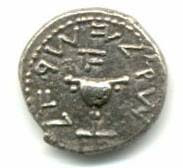It was too windy and gusty to effectively practice power-on stalls, so instead Sean said it was time we did emergency procedures.
We started on the ground with handling engine fires on startup and how to deal with them.
Then I taxied us to the runway, did the takeoff checklist and run up and handled the takeoff. The wind was blowing so hard we gained altitude noticeably faster than normal and then we were in for a bumpy ride.
We experienced updrafts and clear air turbulence, and then started doing in flight emergency actions.
We did engine out procedures which always start with getting the aircraft set for best glide, finding the best possible landing area, and then dealing with the problem, included either trying to do an engine restart if there's sufficient altitude, or if too low to restart then doing an engine out landing.
Lots to learn there and with the ground rushing up quite a few times it was a bit nerve-wracking.
Then we did emergency descents either for a passenger in-flight emergency or to put an on-board fire out.
That was quite a fun elevator ride, but with a bank to prevent negative gees and again the ground rushed up to meet us every time.
In case of an engine fire, you're supposed to set your transponder to squawk 7700 and then start singing the refrain from this song over the radio:
Actually there is a detailed checklist on what to do if there's a fire. In short, you need to cut off its source of fuel, in most cases the aircraft's fuel (or sometimes the electrical system) and the ignition source for the fire and then descend at a good clip to try and get it out.
Then we did radio out procedures, and I had actually read about those before and knew what to do, which made my instructor happy and that was a good thing. It's nice to have some clue, I'll tell you what.
It was a nerve-wracking, white-knuckled lesson. I did get a lot of practice doing climbs, including turning climbs, back to 3,500 after each emergency.
I now need to memorize the emergency checklists and will do so.
In future lessons, we now get to add the possibility that in every flight Sean will declare the engine is out or have him chop the throttle, or there's a fire on board and I'll be expected to handle it.
That was 1.6 hours of serious skull-sweat flying.

3 comments:
Committing those EPs to memory is a GOOD thing! Just sayin...
Nice!
A cheat for best glide is to run your trim wheel to full nose up. That'll pretty much set you up for Vbg and keep you there without you having to focus on it from then on. If your instructor hasn't shown you that one yet, impress him with that trick.
Post a Comment